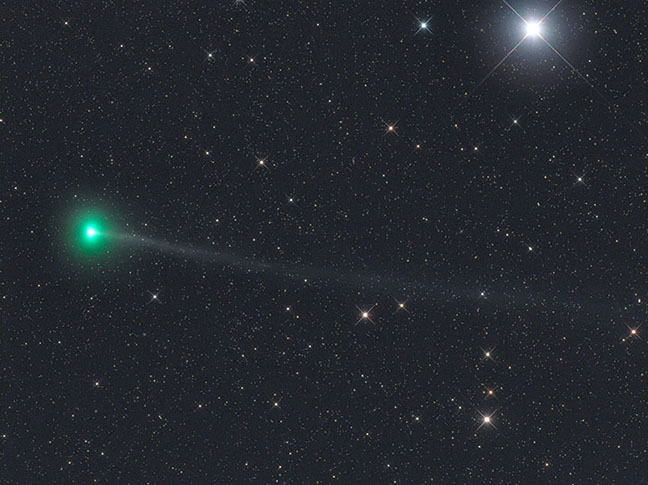Observing Opportunity for Comet 41P/Tuttle-Giacobini-Kresak
There may be a nice opportunity to view Comet 41P/Tuttle-Giacobini-Kresak in the next few days as the current Vancouver forecast calls for partially clear skies from Sunday, April 2nd to Tuesday, April 4th.


This comet is now as bright as 6.5 mag and may brighten even more as it gets closer to the Sun. The comet is closest to Earth on April Fools’ Day, about 21.2 million km away, the closest approach to Earth since its discovery. The comet’s perihelion point, where is it positioned closest to the sun, occurs on April 12th.
It is in an excellent position for observing: near the constellations Draco, Ursa Minor (the Little Dipper) and Ursa Major (the Big Dipper). The comet is quite diffuse but should be visible with binoculars and small telescopes.
41P makes a trip around the sun every 5.4 years, coming relatively close to Earth on only some of those trips. The comet is a member of the Jupiter class of comets. A NASA team will be observing 41P on April 1 using the Infrared Telescope Facility in Hawaii. Because comets formed early in the solar system’s history, Comets that come close to the Earth give scientists a chance to deepen our understanding of the processes that led to the formation of our planet.
“An important aspect of Jupiter-family comets is that fewer of them have been studied, especially in terms of the composition of ices in their nuclei, compared with comets from the Oort cloud”, said Michael DiSanti of NASA’s Goddard Space Flight Center in Greenbelt, Maryland.
A Surprise Brightening of Comet C/2017 E4 Lovejoy
Comet C/2017 E4 Lovejoy was only expected to reach 9th magnitude at its brightest in mid-April but it has already reached 7th magnitude and it’s more condensed and is easier to see. E4 Lovejoy is located in Pegasus, in the east just before dawn. Recent images show a small ion tail. A Sky and Telescope article has images and more details.


